#proto-language
Explore tagged Tumblr posts
Text
Anyone know of any attempted reconstructions of the Proto-World language? I want some inspiration for a project I'm working and want to look at some wacky linguistic theories (phonology specifically, stranger the better)
3 notes
·
View notes
Text
the language nerd in me is fucking screaming and crying about the fact that Cassandra Pentaghast has what i believe may be the most accurate impression of the extinct gothic germanic accent we have, and the fact that they didn't even try to give anyone else from Nevarra the same accent is fucking criminal
yes i know it is an entirely made up accent that miranda developed herself, she unintentionally hit the nail on the fucking head with the accent of a dead language that would even be lore accurate with the placement of Nevarra relative to orlais and the other neighboring countries
also im sorry using Gothic as the language inspiration for nevarran??? is that not like too fucking perfect??
like yeh i get it accent training people for a fake accent is ridiculously hard
i do not care
give me gothic nevarrans in the truest sense of the word
i might post the notes find the notes here i have on the actual linguistic comparisons if anyone cares because i studied her pronunciation to compare to historical texts when i made the connection
#ive been studying proto-indo-european languages and myhtology for years#and dragon age pulls from sooooo many of the descendents ymthologies for its lore#like celtic#hindu#germanic#i think i even spotted so ancient persian influence#but id have confirm#but like it wouldve been so fitting in everyway for them to commit to the gothic accent#but they were fucking cowards#dragon age#dragon age the veilguard#nevarra#cassandra pentaghast#dragon age inquisition
2K notes
·
View notes
Text

Wool & lana
The word lana (wool) in languages such as Spanish is etymologically related to English wool. For words to be related, they don't have to look like each other. Instead, you have to be able to trace them back to the same ancestor through regular sound changes - and that's what linguists managed to do with wool and lana. The infographic shows the Germanic and Romance family trees of these words.
#historical linguistics#linguistics#language#etymology#english#latin#french#dutch#german#spanish#proto-indo-european#proto-italic#proto-germanic#gothic#norwegian#swedish#old norse#danish#icelandic#catalan#portuguese#italian#romanian#low saxon#frisian#lingblr
772 notes
·
View notes
Text
I'm all for the use of non-gendered language and options for non-binary people, I just want them to make linguistic sense. "Nibling" sounds dumb. If you want a gender-neutral word for niece/nephew, it should share etymology with them. They both descend from the Proto-Indo-European root *nepot-, so there are a ton of plausible sounding options for derivations that don't call attention to themselves as neologisms.

Nepot is too visually similar to nephew, and sounds too much like the derivative nepotism, so maybe drop the p like Spanish did and go with something like nete or niete. Niete is too close to niece; nite, maybe? Or neti? Neit, neiti, neite, nit. These all look like real words, not clumsy 21st century portmanteaus like "nibling." If p and t are no good, we can go with another unvoiced stop like k. Nik, neik, nike (probably not that one), niki, neki, neke, nekie, so many possibilities, anything but "nibling."
Same thing with aunt/uncle. I've never heard a non-gendered term that sounds like something a layperson would use.

Hewhos became ewos, became avus, became avunculus, became uncle. Aunt is derived from words that mean mother; amma, amita, ante, aunt. I thought the word parent derived from the same root as paternal meaning father, but no, it's from the PIE root *pere-, mening to bring forth or produce. Sibling ultimately derives from the PIE root for self/oneself (*swe-), literally meaning same blood, related to myself, kin. "Parent's sibling" could be derived from swepere, swepar, suepar, supar, maybe something like sempar, "same parent/same source," simpar (maybe avoid anything with simp in it). Or "one source," onpar, honpar, paron, paroin, peron, peroine (from PIE *hoinom for one). I'm not thinking of germanic soundshifts, how these roots would evolve directly into English, I'm thinking broader, like how they would evolve in Latin or French to be loaned into English. If you want a neutral word that looks like it belongs with aunt and uncle, maybe something like umpar, umper, ompar, onpar, onper, onter, anything like that.
226 notes
·
View notes
Text
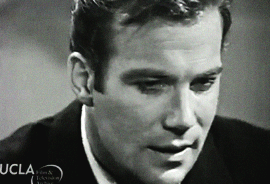
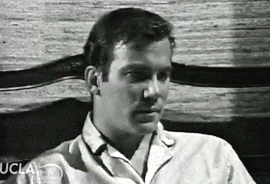


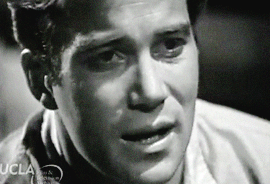

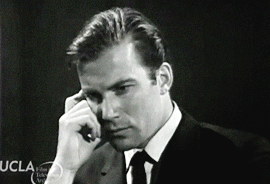
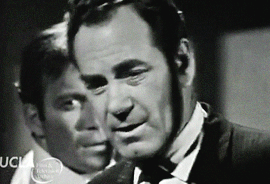
WILLIAM SHATNER in Insight: “Locusts Have No King” (1965; aired 1967)
I think of myself as a principled man. What good are principles if you don’t act on them? How solid is a belief if it isn’t worth fighting for?
#william shatner#tvedit#60s#televisionedit#vintage television#retrotv#retrotvblr#these suck womp womp#but this episode is super short and worth watching.....basically his audition for kirk imo#this character—mike—is like...proto-kirk#and this show is definitely a morality play#you can see the “risk is our business” speech right there in the third row right gif :') same body language. same delivery.#billposting
78 notes
·
View notes
Text




Some little body swap shenanigans to get me back into drawing after my little break
Bonus ‘where did Proto Man go?’:

#this was actually a pretty good way to figure out their different body languages#which isn’t too hard regardless but its a fun way to mess around with it#also I’m a big fan of body swaps having one little detail to tell who each character is#mega man#my art#megaman#rockman#proto man#protoman#megaman bass
222 notes
·
View notes
Text
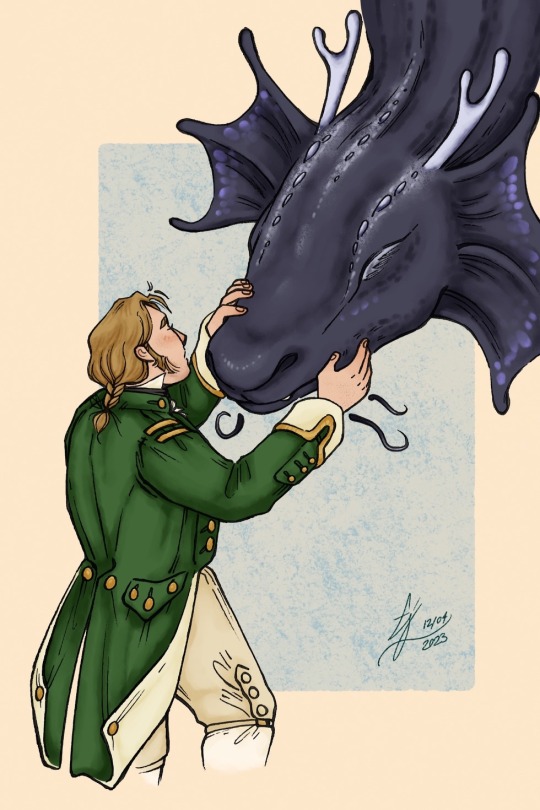
A very fine captain, and a finer friend.
#em draws stuff#em is posting about temeraire#temeraire#william laurence#sizes are not Quite right here but we will improve with time#I think temeraire would be Much larger by the time he gets his frills but also I was constrained by the fact that I was drawing on paper#not 100% settled on his look either but his antlers are Important to me even if they're not canonical#it has been Years since I drew any dragons I think... oh far too long :(#v. excited to sketch up some of the other excellent fellows in the coming months (starting reading throne of jade tomorrow!)#way back in 2021 eve proto-language said the way I drew pullings at the time was granby-reminiscent so I have been picturing That#let's see if I have improved since 2021 <- very probably I have done so#'specially as someone looked in my sketchbook today and saw this and told me I should be illustrating books#bestie (note: not bestie at all) you know I would if I could :/
431 notes
·
View notes
Text

Tracklist:
Future Legend • Diamond Dogs • Sweet Thing • Candidate • Sweet Thing (Reprise) • Rebel Rebel • Rock 'n' Roll With Me • We Are the Dead • 1984 • Big Brother • Chant of the Ever Circling Skeletal Family
Spotify ♪ YouTube
#hyltta-polls#polls#artist: david bowie#language: english#decade: 1970s#Glam rock#art rock#proto-punk#soul#rock#Rock Opera
24 notes
·
View notes
Text

Silly old men BCE.
Language notes:
Mr. Germania speaks Proto-Germanic, here written in the Elder Futhark runic alphabet:
ᚱᚢᛗᛟᚾᛁᛉᚺᚢᚱᚾᚢᚾᚷᚨᛉ = *rūmōniz *hurnungaz = "roman bastard"
(I translated it myself and can't really verify how accurate it is so keep this in mind)
The classical Latin alphabet didn't have the letters J, U and W so I often represent Grandpa Rome's speech bubbles without them.
I'll let the scene which inspired this piece explain the Latin bit lmao
#hetalia#hetalia fanart#hws rome#hws roman empire#ancientalia#hws germania#gerrome#latin language#proto germanic#my art#welcome to my dead languages obsession
58 notes
·
View notes
Text

Starkey comics: I've made a giant tree of Indo-European languages! 🌳🌸
Actually this was just intended a template with which I plan to make a bunch of images about related words in these languages, so stay tuned for that. And I'll probably put a HD version of this image on my site soon too.
This image shows 64 living Indo-European languages (around the outside), as well as many dead and extinct languages.
Moving into the image from the outside we travel back in time, until we reach the core of the image, wherein lies Proto-Indo-European. PIE was spoken somewhere around the border of Europe and Asia, and diverged into the 10 inner Proto languages shown here 4500+ years ago.
There are about 380 Indo-European languages missing from this image, although I've tried to pick representatives from as many branches as possible. The Indo-Iranian branch is the largest, actually accounting for around 2 thirds of Indo-European languages.
-⭐🗝️
137 notes
·
View notes
Text
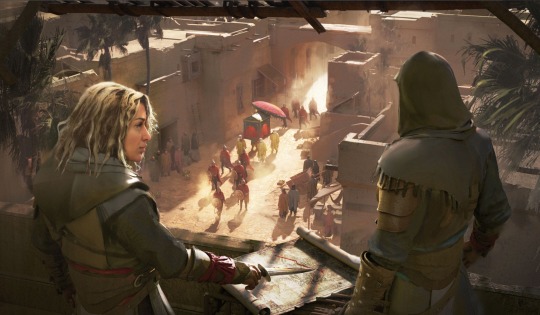
[Roshan and Basim; the Art of ac Mirage digital artbook]
Ever since I started playing AC Mirage, I’ve been thinking about how Roshan’s accent sounded slightly different from the others. The way she says “Basim Ibn Ishaq” is noticeably unique to me —so much so that I always thought “Wow, she sounds so Persian to me.”
Persian (Farsi) is the language of poetry, literature and wit. It is melodic by nature and softly spoken; refined and polished through centuries to become the beauty it is today. [its proto-persian roots go back to around 1200BC, alongside those of Sanskrit and Greek] And that’s exactly how Roshan sounds. She doesn’t just speak; she sings in her own way and you feel it.
Just compare her accent with Mentor Reyhan’s, who sounds like a true Arab. The contrast is clear. I understand that for non-Arabic and non-Persian players, it might be a subtle difference but if you know the languages, you’ll hear it right away.
Well, today I finally looked it up. I was right. Her VA is Shohreh Aghdashlou, a Persian-American actress. Perfectly done, Shohreh!! If you ever see this, please know that you’ve done a wonderful job and we love Roshan endlessly! 🤍🫶🏻
Here’s a small fact: The name Roshan means “bright” in Persian. Interestingly, nowadays few people name their daughters Roshan. Instead, the more popular choice is Roshanak (روشنک) which means “little light” or “small brightness”… kind of like a symbol of hope and gentle radiance. Now, just think about how perfectly the name “Roshan” suits mentor Roshan’s hair and eye color. ✨
#Basim#basim ibn ishaq#Roshan#roshan bint la'ahad#ac mirage#Sanskrit#Greek#Proto-Persian#these three languages all belong to the Indo-European language family#whose roots date back to around 4500 years ago#I can't stop thinking about writing a fic about them!#and remember that Basim is actually Babylonian
16 notes
·
View notes
Text

Girles were children
The ancestor of the word girl meant 'child of any gender'. Its meaning narrowed to 'young female human' during the Middle English period. The meanings of words change over time. This is called semantic drift. Click my new graphic below to have a closer look at five examples of narrowing. Tomorrow we'll dive into the opposite semantic change: widening.
#historical linguistics#linguistics#language#etymology#english#lingblr#proto-germanic#middle english#old english#german#dutch#swedish#norwegian#danish#icelandic#frisian#afrikaans
291 notes
·
View notes
Text
If there are any linguistics professionals reading this, I could use some help.
I'm doing research into Proto-Indo-European, the mother tongue of much of Europe and South Asia, and I recently discovered Schleicher's Fable, a short story about sheep and horses which has been translated into a dozen proto-languages to show how different branches envolved over the millennia.
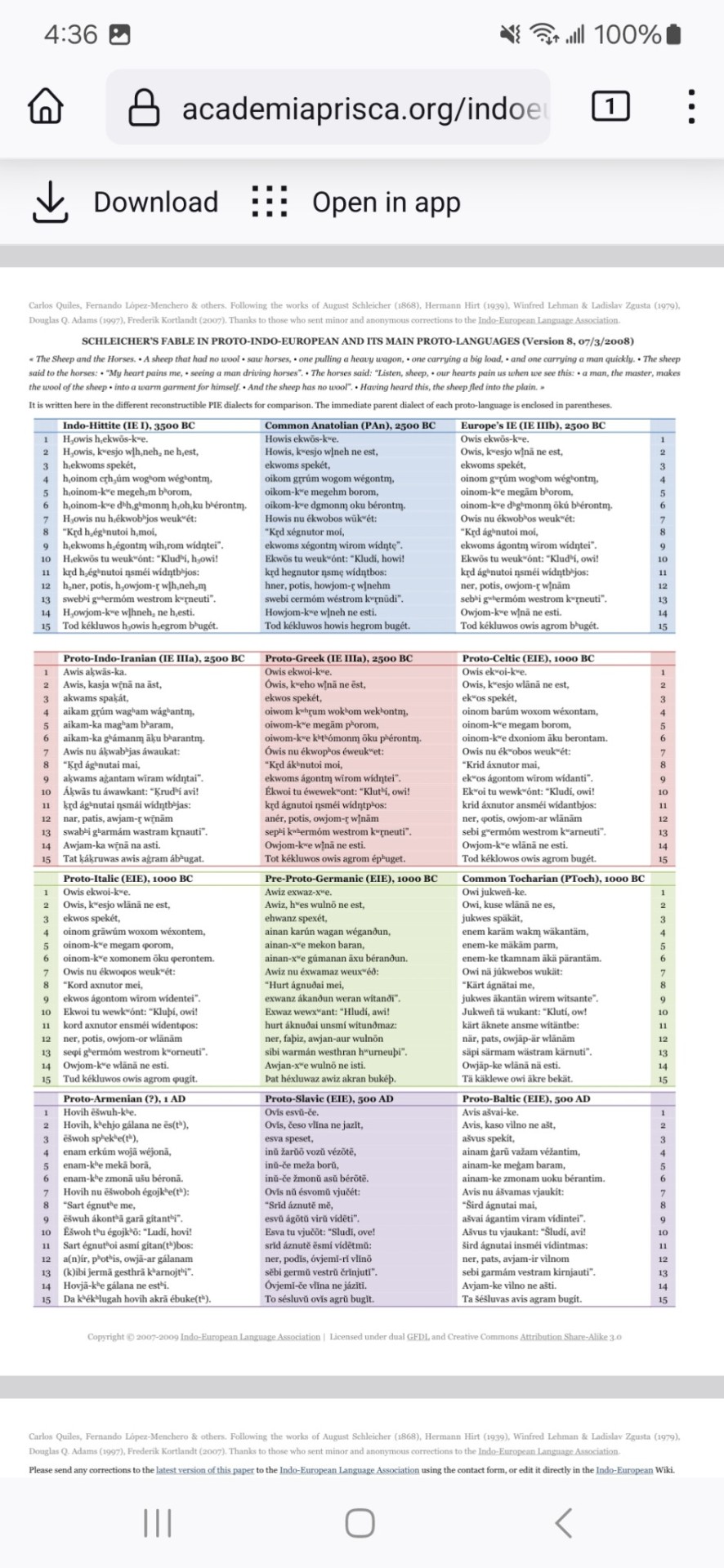
My problem is that I don't know the word order or declensions (suffixes for different conjugations) of any of these languages, so I have no idea which words mean what throughout the text.
I know owis/hovis/avis means sheep (same etymology as modern English "ewe")
Ekwos means horse (equus, equestrian, etc.)
Wlna/wlana/vilno means wool
Oinom/aikam/enem means one
Krd/kart/sird means heart (cardio)
Widntei/widntbhos means see/seeing/sight (video/visual)
I think agnutai/egnutoi means hurt or pain (agony) but I don't know for sure
Same with megehm/megam for big (presumably like mega/magnum)
I can recognize a handful of other words from context, but some sentences completely confuse me. The phrase "heavy wagon" appears to be "woghom wegontm," both words of which look like they possibly share the same root, but I don't know which means heavy and which means wagon. All the variations of "dgmonm oku bherontm" mean "carry a man quickly," but I don't know which words corresponds to carry, man, or quickly. I think bherontm means carry because it has the -ontm suffix which I think marks a verb, but again, I just don't know.
I don't know the words for "the master makes the wool of the sheep into a warm garment for himself" or "the sheep fled into the plain." It's helpful that the story is broken down into lines, but it doesn't explain what each individual word means in order, so I don't know the proper translation.
Does anyone know where I can find an in depth breakdown of Schleicher's Fable with every word and declension annotated? I've tried looking up Proto-Indo-European glossaries/dictionaries online, but every corpus spells the words differently (lots of subscript letters and numbers and asterisks), some words have multiple PIE translations and no two sites agree on which to use when. It's not helpful at all.
I need a word-by-word translation, something like:
PIE: owis kwesjo wlna na est ekwoms speket
Literal: sheep which wool no have horses saw
English: a sheep which had no wool saw horses
Does anyone know where I can find the proper resources for this project?
#help me tumblr#linguistics#proto indo european#pie#proto language#schleicher's fable#the sheep and the horses#etymology#history#translation#dead languages#indo european#languages
44 notes
·
View notes
Text
Colors in Ainu! - Ainu itak; iro
retar - white retara - white (Kaminokuni) kunne - black ekurok - true black hure - red kunnehure - brown toine - brown (Kaminokuni) ruhure - pink hukinane - green hukinatomne - green (Saru) kinane - green (Kaminokuni) (kon)kan(e/i) - gold sirokan(e/i )- silver nis iro - light blue siwnin - yellow (historically also blue&green) nikapiro - yellow (Bihoro) sikerpepeus - yellow (Horobetsu) sikerepepeun - yellow (Kaminokuni) katuwa - grey rayoci - rainbow-colored
The traditional Ainu color scheme has four colors; yellow, white, red and black.
The word for "color", iro, is from the same root as the Japanese word for it, 色; Proto-Japonic *erə is the root for both words. Did you know that this word is also the root for the Palauan word chiro meaning the same thing?
#langblr#language#learning#studyblr#ainu#ainu itak#word list#endangered languages#vocab#proto-japonic#palauan#japanese
41 notes
·
View notes
Text
Review of The Horse, the Wheel, and Language: How Bronze-Age Riders from the Eurasian Steppes Shaped the Modern World by David W. Anthony

I will be upfront, it is a very technical book. If you are not well versed in the anthropological categorizing of cultures and time periods of the areas being discussed it can be very difficult to keep up with the more finite points the author is making. That being said, I had never heard of any of the specific cultures being discussed in the Danube Valley and was still able to enjoy this book and its well put together analysis of various aspects of language, culture, technological developments and shifts in behaviors and place.
If you are especially interested in any of the major themes this book discusses (which is in all honesty is an extensive list including but not limited to; the development of Indo-European language, the time periods and locations as well as likely motivation for domestication of various livestock types, the cultural effects of technological developments on the peoples of the Eurasian Steppes and their migration/trading patterns) I do highly recommend. It is heavy reading but extremely illuminating.
#The horse the wheel and language#David W Anthony#historical anthropology#anthropologist#anthropology#ancient languages#language#historical linguistics#linguistics#proto indo european#indo european#steppes#eurasian#eurasian steppe#horse#horses#husbandry#burials#Cattle#sheep#book review
186 notes
·
View notes
Text
So this is my first attempt at a PIE (Proto-Indo-European) a postiori conlang, what I imagined for this scenario is somehow a PIE speaking group made it to the British isles before the Celts, however this is mostly just an exercise in seeing how to go about making a PIElang
Old Wharchish — Wharcanīćeh
Old Wharchish Numerals
ainē "one" /aɪ̯neː/
dvo "two" /dβo/
śreyā "three" /ɕrejaː/
whasvorā "four" /ʍasβoraː/
pęwha "five" /pẽʍa/
hvexś "six" /xβeχʂ/
haftan~haftą "seven" /xaɸtan~xaɸtã/
oxśu "eight" /oχʂu/
nuan~nuą "nine" /nwan~nwã/
dexąs "ten" /deχãs/
vikexątsi "twenty" /βikeχãtsi/
xącen~xącę "hundred" /χãkjen~χãkjẽ/
plucarwhahē "rainbow" /plukjarʍaxeː/
ilāi yxāen wamo "I like to walk the street"
/ilaːi əχaːen~(əχaːẽ) ua̯mo/
travel-LOC.SG path-ACC.SG like-1SG.NOM
Declaration of human rights (this will prob. Change)
h₂ólyoes ǵʰmónes h₁léwdʰeroes somHóeskʷe gʷr̥Htóteh₂ti h₃r̥ǵtúsukʷe ǵn̥h₁yóntor. éybʰos dh₃tóy ménos ḱḗrkʷe h₁stés h₂énteroeykʷe sm̥h₂éleyes bʰréh₂tr̥bʰos swé h₂éǵoyh₁n̥t.
↓ PIE > WHARCANĪĆEH
olieā qamonā elaodareā hemamaśwha qaricocātsi ārxśuhuwha qaniǫcor. ābē dicu manē xerwha iśtā ącaruwha hamālayā vrācarbē hva aquyas.
↓ Late old Wharchish
Olya kamna elodaza hemmaśv karićosi wāzūva kannuśu. avi diśu mani zēv iśca naśaruv hamwalaya evaśāvi hva acas
9 notes
·
View notes